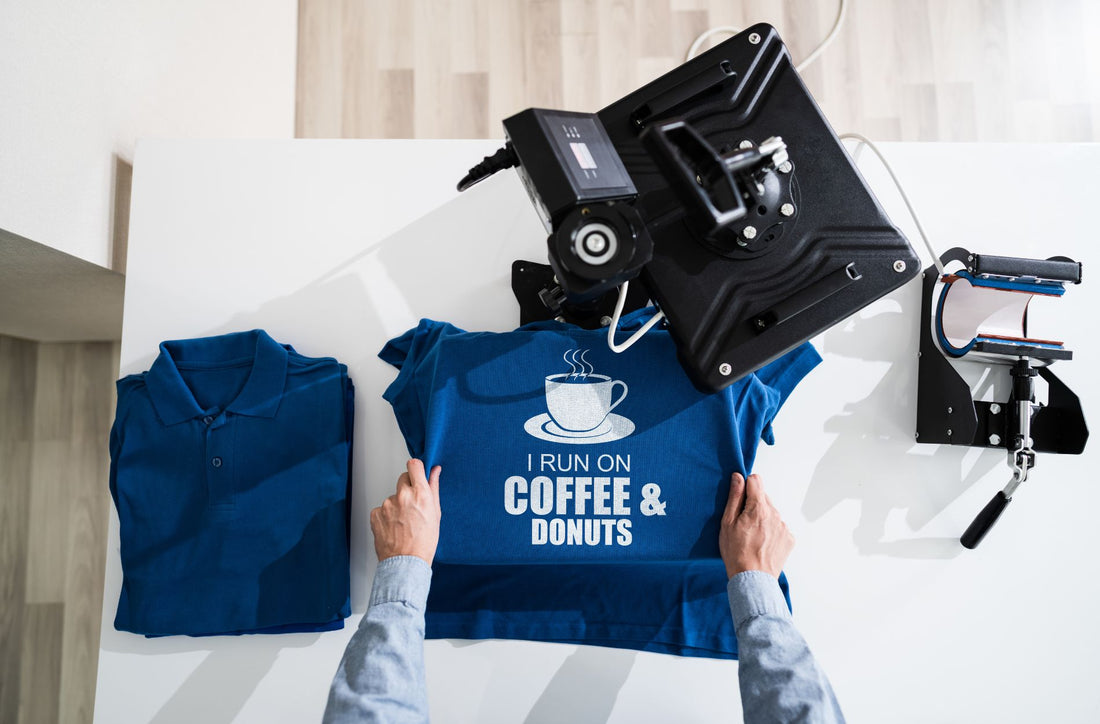As the Southeast's #1 Source for DTF Transfer Films, Southeast Prints is dedicated to providing our customers with valuable information and resources, enabling them to achieve impressive results and grow their custom printing businesses. DTF printing has rapidly gained popularity as an innovative and versatile method for creating striking, high-quality prints on various substrates.
In this educational and informative guide, we will dive deep into the world of substrates for DTF printing, providing you with a comprehensive understanding of the exciting possibilities that DTF transfer films have to offer.
Selecting the right substrate for a project is essential, as different materials have unique characteristics that can impact the final appearance and durability of a print. By understanding the nuances of various substrates and their compatibility with DTF transfer films, you can ensure that your custom projects consistently meet or exceed expectations, delighting your clients and setting your business apart from the competition.
This expansive guide will discuss a diverse range of substrates suitable for DTF printing, including both common and unconventional options, as well as their respective benefits and challenges. We'll cover essential aspects such as substrate preparation, transfer application techniques, and finishing processes for each material type, providing you with expert insights on how to achieve unparalleled results with your DTF prints.
Additionally, we will analyze various industries and niche markets that can benefit from the versatility and quality offered by DTF printing, showcasing the value and potential of this cutting-edge technique for a wide array of applications.
Exploring Popular Substrates for DTF Printing
DTF transfer films boast versatility, capable of adhering to a wide array of substrates. Let's explore some popular options for DTF printing:
- Cotton: A classic choice for custom printing, cotton offers a soft, comfortable feel, breathability, and excellent durability—making it ideal for apparel. DTF transfer films adhere well to cotton, ensuring vibrant prints with a long-lasting finish. Light garment pretreatment may be necessary in some cases to optimize image quality.
- Polyester: Despite its reputation as a challenging substrate for traditional transfers, DTF printing works well on polyester. This versatile and durable material is suitable for activewear, performance fabrics, and other industries due to its moisture-wicking and quick-drying properties. Always follow recommended settings for polyester to avoid scorching or burning the material.
- Blends: Mixtures of different fibers, such as cotton-polyester or cotton-elastane blends, are prevalent in the custom printing world. Fortunately, DTF transfer films can accommodate these blended fabrics with ease, providing customization options for various styles and comfort levels without compromising the integrity of the print.
Unconventional Substrates and Unique Applications
DTF printing isn't limited to just fabric. Here, we explore some unconventional substrates:
- Leather: Whether natural or synthetic, leather can be challenging for traditional printing methods, but DTF transfer films adhere effectively to this substrate. Potential applications include personalized wallets, bags, and custom footwear.
- Wood: Thanks to the flexibility of DTF transfer films, printing unique designs onto wooden surfaces is a promising possibility. Whether for signage, custom furniture, or artistic pieces, DTF printing allows you to add a professional edge to wooden projects.
- Glass and Ceramics: With DTF printing, creating custom logos and designs on glassware, mugs, and plates is feasible. The versatility of DTF transfer films enables the application of intricate designs even on curved and uneven surfaces.
Selecting and Preparing Substrates for DTF Printing
To achieve pristine results, taking the time to select and prepare your substrate is integral.
- Substrate Selection: Always ensure that your chosen substrate is compatible with DTF printing. Typically, DTF transfer films work best on porous surfaces which allow the ink to penetrate and adhere to the material.
- Material Preparation: Clean your substrate thoroughly before printing to remove contaminants like dirt, grease, or lint. Use a lint roller for fabrics and a mild cleaner for non-fabric substrates. If necessary, apply light garment pretreatment to optimize image adhesion.
- Testing: Before proceeding with your main project, conduct a test print to ensure your selected substrate is suitable for DTF printing and that the final result meets your expectations. This process can save time, material, and energy in the long run.
Understanding Industry-Specific Applications
From fashion retail to promotional merchandise, various industries can benefit from the versatility of DTF printing:
- Fashion and Apparel: DTF printing caters to an array of fabric types, opening doors for creative and unconventional fashion designs. The photo-quality images and durable prints make it ideal for showcasing intricate artwork on clothing and other wearable items.
- Promotional Products: Custom T-shirts, tote bags, and other promotional items are staples for events and marketing efforts. DTF printing enables businesses to create eye-catching, personalized merchandise to spread their message, forge connections, and enhance brand recognition.
- Home Décor: From custom-printed cushion covers to personalized artwork on wooden panels, DTF printing presents innovative opportunities to add a unique touch to home décor items. Designers, artisans, and décor enthusiasts can explore boundless creative possibilities by leveraging the expansive substrate options offered by DTF transfer films.
Conclusion
DTF printing offers unmatched versatility for custom printing enthusiasts, professionals, and businesses alike. By understanding the substrates compatible with DTF transfer films and following best practices in substrate selection, preparation, and testing, you can ensure consistent, exceptional results that cater to diverse industries and customer preferences.
As you continue exploring the world of substrates for DTF printing, don't forget the other essential components for success: utilizing top-quality materials, maintaining up-to-date equipment, and fostering a drive for constant improvement. By remaining attentive to the ever-evolving landscape of custom printing and DTF technology, you can keep your business consistently ahead of the curve and establish yourself as a leader in this vibrant, creative field.
Are you looking for a reliable and high-quality DTF printing service? Look no further than Southeast Prints! Our team of experts offers a comprehensive guide to substrates for DTF printing, ensuring that your prints are of the highest quality and durability. With our cutting-edge technology and state-of-the-art equipment, we can handle all your DTF printing needs, no matter how complex or demanding. Contact us today to learn more about our services and how we can help take your printing to the next level.

